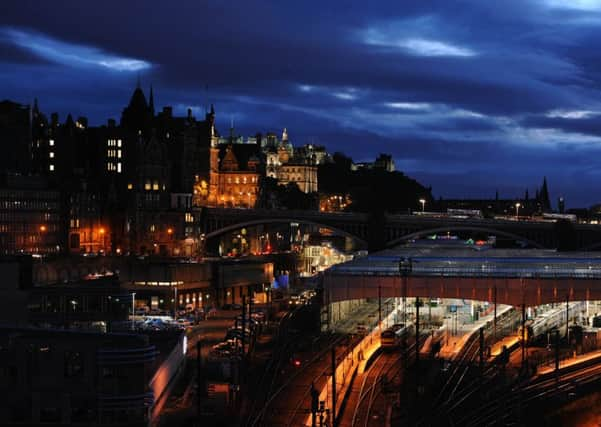Historic Edinburgh landmarks will '˜go dark' for Earth Hour


The conservation charity WWF’s Earth Hour will see hundreds of millions of people around the world going ‘lights out’ at 8.30pm in a “symbol of solidarity with the planet”.
In the city, Edinburgh Castle, St Giles’ Cathedral, the City Chambers on the Royal Mile and various council buildings will be plunged into darkness at 8.30pm.
Advertisement
Hide AdAdvertisement
Hide AdOther Lothians buildings going dark include Linlithgow Palace, the Cross Well monument and Aberlady Parish Church.
Since beginning 11 years ago, the campaign has grown to become the world’s largest public campaign designed to highlight climate change’s impact.
A recent NFP Synergy survey found it was the “most heard of campaign in Scotland”.
Frances Rayner, head of communications at WWF, said: “What’s striking is every council area in Edinburgh and the Lothians has signed up this year.
Advertisement
Hide AdAdvertisement
Hide Ad“Over three and a half thousand Scots and 900 Scottish schools signed up last year, and across the UK more than 23,000 people have said they’re participating on our website.”
As well as asking members of the public to take part in the blackout, this year the WWF are encouraging participants to make a ‘promise to the planet’.
Listed promises include refusing plastic cutlery with takeaway food, reusing coffee cups, switching to a green energy supplier and switching to an electric vehicle.
This campaign has received high-profile support in the form of tennis star and WWF ambassador Andy Murray, who wrote a letter in support.
Advertisement
Hide AdAdvertisement
Hide AdHe said: “This year, make a #PromiseForThePlanet and change an aspect of your life to live more sustainably.
“This could be switching to a green energy provider, refusing plastic cutlery with takeaway food or buying a re-usable coffee cup.
“Whilst individually these changes may seem small, together they will have a huge impact and will help to reduce our environmental footprint.”
This week, a study led by the WWF found that climate change could force up to half of plant and animal life in the world’s most naturally rich areas into extinction.
Advertisement
Hide AdAdvertisement
Hide AdThe charity is calling on the Scottish Government to ensure its forthcoming climate change bill ends Scotland’s climate change contribution within a generation.
Ms Rayner said: “A key reason we’re based in Edinburgh is because of our proximity to the parliament.
“We work a lot with other environmental NGOs in the area because our remit as an organisation that cares about nature is to ensure they do enough to stop runaway climate change.”
As well as “switching off” various official buildings, all of the Lothians councils will promote Earth Hour through intranet and social media channels.
Advertisement
Hide AdAdvertisement
Hide AdHistoric Environment Scotland is organising one of the biggest blackouts at Edinburgh Castle. Eleanor Mitchell, Sustainability Officer at Historic Environment Scotland, said: It’s more important than ever to make sure that we work together to encourage sustainable choices for people, buildings and communities to help protect the environment and historic sites at risk from climate change.”
It was estimated that across Scotland last year, around 165 buildings and landmarks were able to participate- adding to an estimated 3000 others across the globe.
Numbers are expected to swell, in part because of David Attenborough’s BBC TV show The Blue Planet which has been credited with spearheading wave of concern and activity around environmentalism.
This weekend’s activity comes as a new study shows that even if the Paris Climate Agreement 2C target is met, some places could still lose up to a quarter of their wildlife species.
Dr Sam Gardner, WWF Scotland acting director said: “Within our children’s lifetime, places like the Amazon and Galapagos Islands could become unrecognisable, with half the species wiped out.”